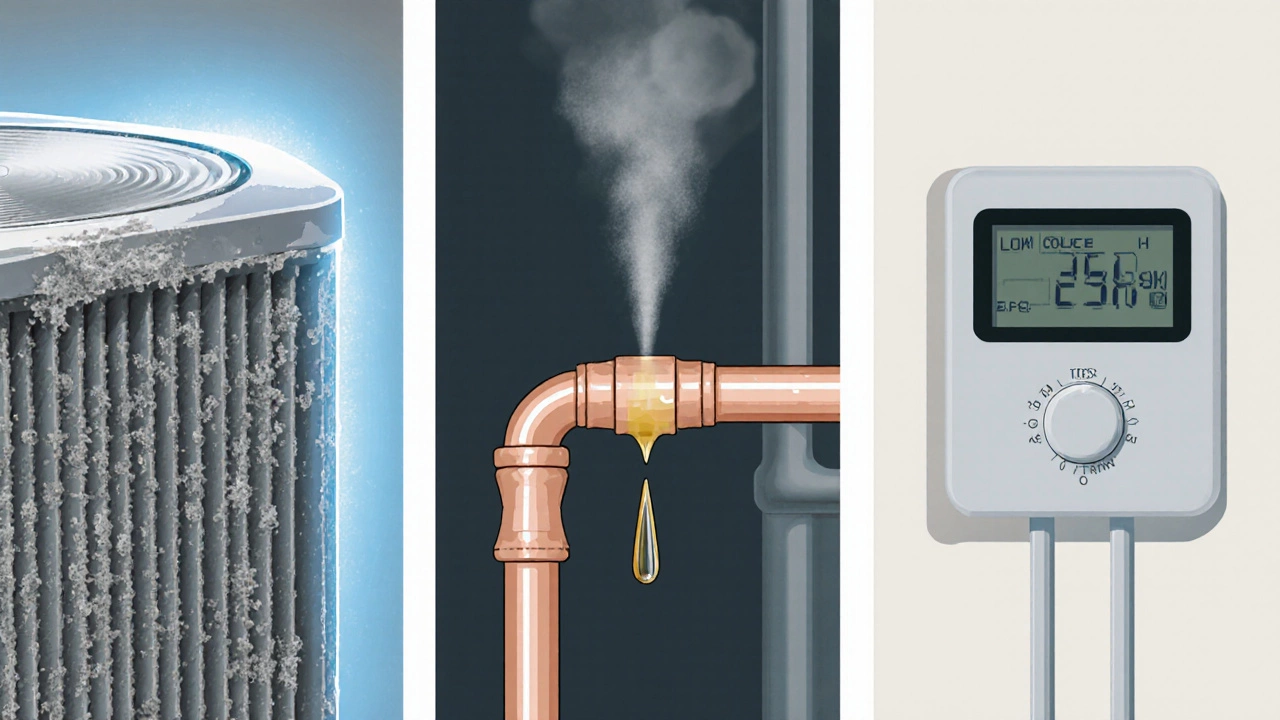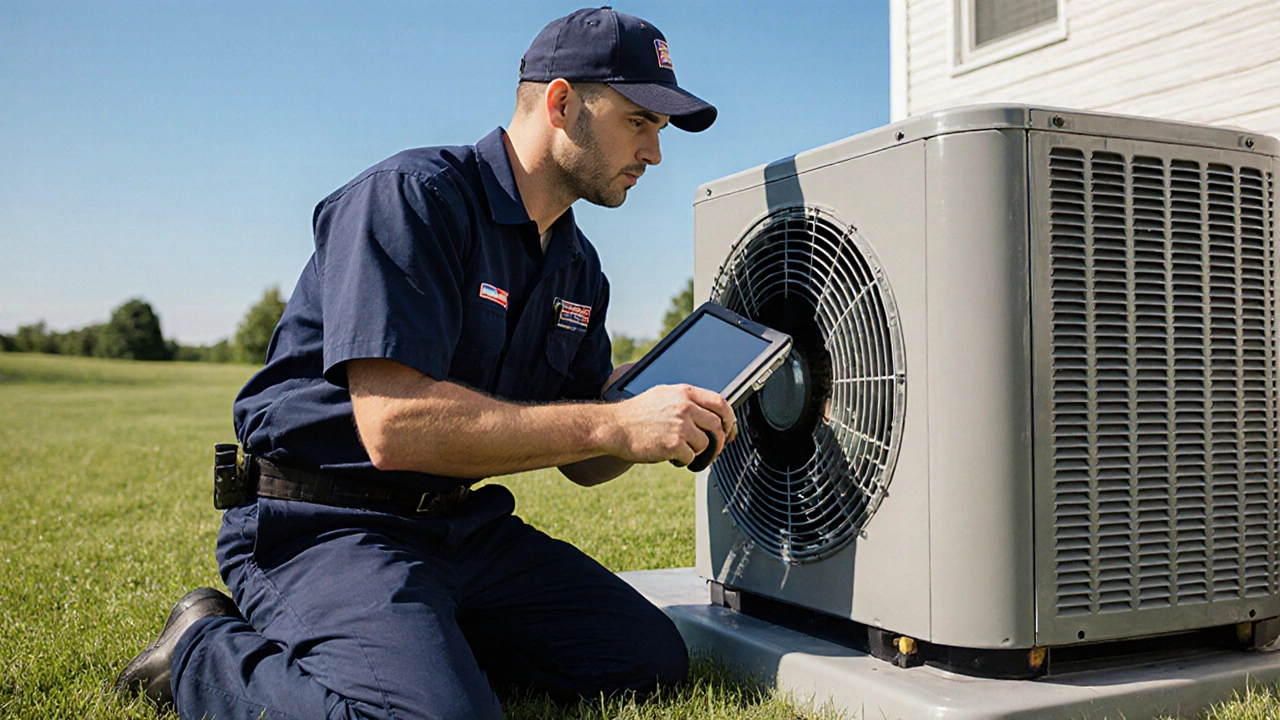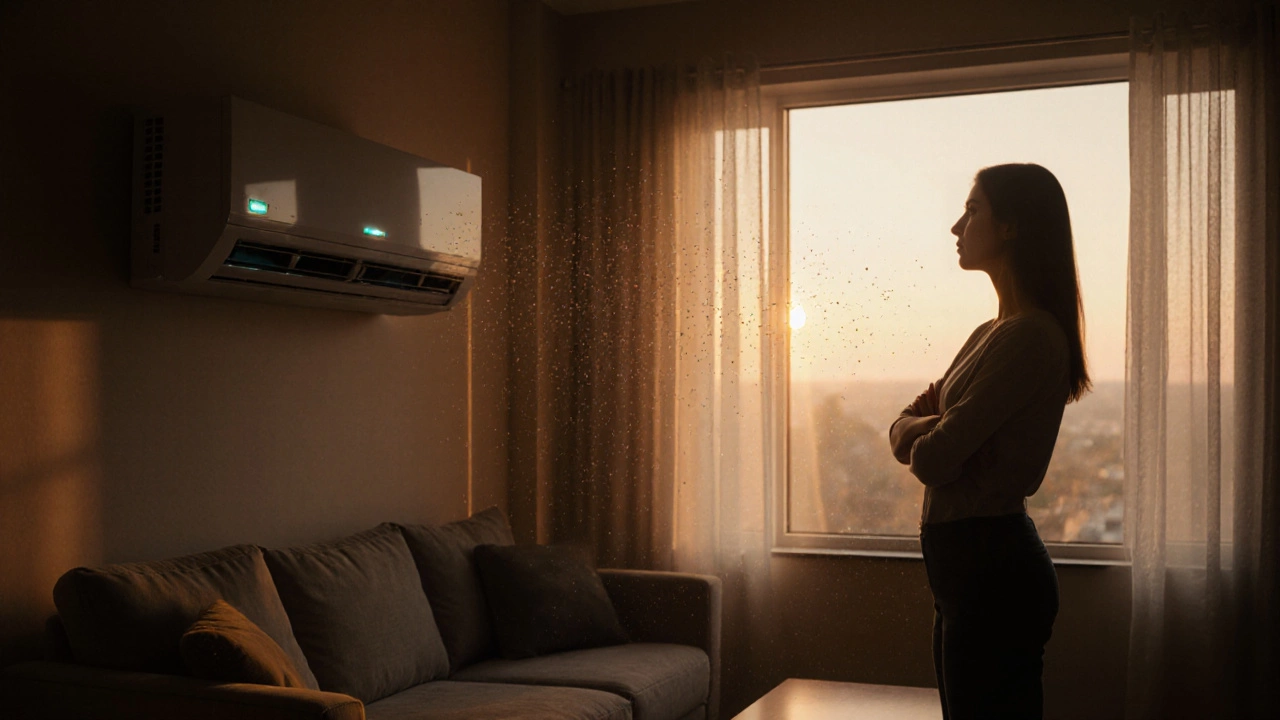Ever wonder why your heat pump hums all day yet the house stays warm? That feeling of wasted electricity and stale air can be frustrating, especially when summer is on the way. Below you’ll find the most common reasons a heat pump not cooling problem occurs, easy steps to diagnose it, and clear signs that it’s time to call in a pro.
Key Takeaways
- Low refrigerant, dirty coils, or a faulty thermostat are the top three culprits.
- Systematic troubleshooting can save you a service call and keep the unit running efficiently.
- Regular maintenance-clean filters, clear the outdoor unit, and schedule professional checks-prevents most breakdowns.
How a Heat Pump Cools Your Home
When a heat pump is a heating and cooling system that transfers heat using a refrigerant cycle, it operates much like a refrigerator in reverse, the indoor air is cooled by the evaporator coil while the outdoor unit acts as a condenser. The compressor pressurizes the refrigerant, raising its temperature so it can release heat outside. Then the refrigerant expands, dropping to a low temperature that absorbs heat from the indoor air. This cycle repeats until the thermostat’s set temperature is reached.
Common Reasons It Runs Without Cooling
Even though the pump’s fan and compressor may spin, several issues can stop the cooling effect:
- Low or leaking refrigerant - Without enough refrigerant, the evaporator can’t absorb heat.
- Dirty evaporator coil - Dust builds up and blocks heat transfer.
- Blocked condenser coil or outdoor fan - Heat can’t be expelled outdoors.
- Faulty compressor - The heart of the cycle fails to pressurize refrigerant.
- Improper thermostat settings or a dead temperature sensor - The system thinks the house is already cool.
- Clogged air filter - Restricted airflow reduces coil efficiency.
- Malfunctioning expansion valve - The refrigerant doesn’t expand properly, halting cooling.

Step‑by‑Step Troubleshooting Guide
- Check the thermostat. Make sure it’s set to "cool" and the temperature is at least 5°F lower than the current room temperature. Verify that the fan mode is on "auto" rather than "on".
- Inspect the air filter. If it looks dark or feels clogged, replace it. A clean filter restores proper airflow to the evaporator coil.
- Examine the outdoor unit. Clear leaves, debris, and grass from around the condenser coil. Make sure the fan spins freely; any rattling may indicate a bearing issue.
- Look for ice on the evaporator. Ice formation signals a refrigerant problem or insufficient airflow. If you see frost, turn the system off for 30 minutes to melt, then restart.
- Listen for the compressor. A humming sound without the distinctive click of the compressor engaging could mean it’s stuck or the capacitor is bad.
- Check refrigerant lines. Look for oil stains or visible leaks along the copper tubing. Leaks often require a professional to repair and recharge the system.
- Test the temperature sensor. Use a digital thermometer to compare the ambient indoor temperature with the reading shown on the thermostat. A large discrepancy suggests a sensor fault.
Comparison of Typical Issues
| Issue | Typical Symptom | Quick Fix |
|---|---|---|
| Low refrigerant | Warm air, hissing sound, ice on evaporator | Call a certified technician to locate leak and recharge |
| Dirty evaporator coil | Reduced cooling, dirty filter | Clean coil with a soft brush or professional service |
| Blocked condenser | System runs hot, fan noisy | Clear debris, straighten fan blades |
| Faulty thermostat | Incorrect temperature reading | Replace thermostat or recalibrate |
| Clogged air filter | Weak airflow, coil frosting | Replace filter |

When to Call a Professional
If you’ve walked through the checklist and the unit still isn’t cooling, it’s time to bring in a certified HVAC technician. Look for these red flags:
- The compressor never starts or makes a grinding noise.
- There’s a noticeable refrigerant leak (oil stains, hissing).
- Electrical components like capacitors or contactors appear burnt.
- Repeated short‑cycling despite correct thermostat settings.
Professional service ensures proper handling of refrigerant, which is regulated in New Zealand, and verifies that the system complies with safety standards.
Preventive Maintenance Checklist
- Replace or clean the air filter every 1-3 months during the cooling season.
- Inspect and clear the outdoor unit monthly; keep at least two feet of clearance.
- Schedule a full system tune‑up with a licensed technician before summer begins.
- Check thermostat batteries and calibrate settings annually.
- Listen for unusual noises during operation and note any temperature fluctuations.
Sticking to this routine can cut energy bills by up to 15% and dramatically extend the lifespan of your heat pump.
Frequently Asked Questions
Why does my heat pump keep running even when the room is hot?
The unit may be in a defrost cycle, the thermostat could be set incorrectly, or there may be a problem with refrigerant flow. Check thermostat settings first, then look for ice on the indoor coil.
Can I add refrigerant myself?
No. Handling refrigerant requires certification under New Zealand’s Ozone Regulations. A licensed technician must locate the leak, evacuate the system, and recharge it to the correct pressure.
What temperature should I set my thermostat to for optimal cooling?
Most experts recommend 74°F (23°C) when you’re home and a few degrees higher when away. Using the "auto" fan mode lets the system run only when needed, saving energy.
Is it normal for the outdoor unit to be noisy?
A low‑level hum is typical, but rattling, grinding, or a high‑pitched squeal suggests a loose fan blade, a bad motor bearing, or a failing compressor. Turn off the unit and call a professional.
How often should I have my heat pump inspected?
At least once a year, ideally in the spring before cooling season begins. An annual check catches wear, verifies refrigerant charge, and ensures safe operation.
